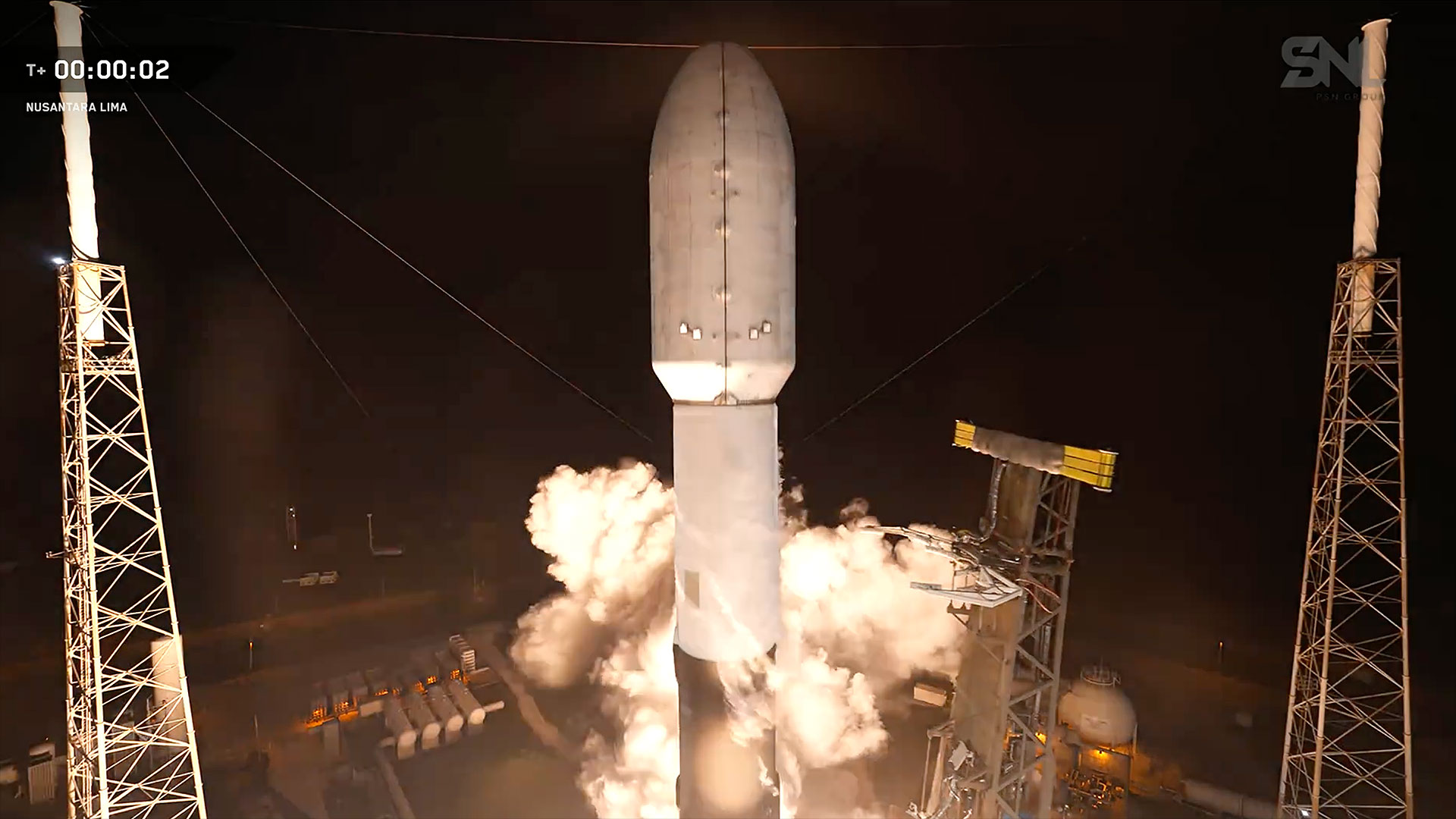NASA's Mighty Saturn V Moon Rocket Explained (Infographic)

Designed to fly three Apollo astronauts to the moon and back, the Saturn V made its first unmanned test flight in 1967. A total of 13 Saturn V rockets were launched from 1967 until 1973, carrying Apollo missions as well as the Skylab space station. Every part of the giant rocket is used and then discarded during a mission. Only the tiny command module survives to return to Earth.
The Saturn V rocket’s first stage carries 203,400 gallons (770,000 liters) of kerosene fuel and 318,000 gallons (1.2 million liters) of liquid oxygen needed for combustion. At liftoff, the stage’s five F-1 rocket engines ignite and produce 7.5 million pounds of thrust.
At an altitude of 42 miles (67 kilometers), the F-1 engines shut down. Explosive bolts fire, and the severed first stage falls into the Atlantic Ocean. [Saturn V Rocket Engines Explained (Infographic)]
The second stage carries 260,000 gallons (984,000 liters) of liquid hydrogen fuel and 80,000 gallons (303,000 liters) of liquid oxygen.
A few seconds after the second stage’s five rocket engines are ignited, an interstage skirt at the bottom end of the second stage is jettisoned. Shortly after that, the emergency escape rocket on top of the vehicle, only usable below 19 miles altitude, is fired off and discarded.
At 9 minutes and 9 seconds after launch, the second stage is discarded and the third stage’s rocket engine is fired. The third stage carries 66,700 gallons (252,750 liters) of liquid hydrogen fuel and 19,359 gallons (73,280 liters) of liquid oxygen. [The World's Tallest Rockets Compared]
The third stage’s single rocket engine is fired until 11 minutes and 39 seconds after launch, when the vehicle has attained sufficient speed to reach Earth orbit. About two and a half hours later, the third stage engine is restarted to send the Apollo spacecraft out of Earth orbit and toward the moon.
Breaking space news, the latest updates on rocket launches, skywatching events and more!
After the astronauts in Apollo dock with the lunar landing module and pull away from the now-useless third stage, this last remaining part of the Saturn V coasts away into deep space or is commanded to fly to a crash landing on the moon.
Follow SPACE.com on Twitter @Spacedotcom. We're also on Facebook and Google+.
Join our Space Forums to keep talking space on the latest missions, night sky and more! And if you have a news tip, correction or comment, let us know at: community@space.com.

Karl's association with Space.com goes back to 2000, when he was hired to produce interactive Flash graphics. From 2010 to 2016, Karl worked as an infographics specialist across all editorial properties of Purch (formerly known as TechMediaNetwork). Before joining Space.com, Karl spent 11 years at the New York headquarters of The Associated Press, creating news graphics for use around the world in newspapers and on the web. He has a degree in graphic design from Louisiana State University and now works as a freelance graphic designer in New York City.
